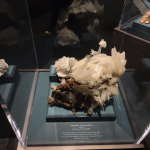Human’s Pursuit of Perfection in Hawthorne’s “The Birthmark”
Human’s Pursuit of Perfection in Hawthorne’s “The Birthmark”
Nathaniel Hawthorne’s The Birthmark is a story about a couple, Aylmer and Georgiana. Georgiana is described to be very beautiful, with a birthmark on her left cheek that is shaped like a small-hand. Aylmer on the other hand, is a man of science and intellect who was successful in his endeavors and works for the field. He is also ambitious, in a way that he is confident that while godly acts such as creating man from a human experiment, or converting gold into metal, is beyond the reach of human capacity, he believed that he at least, might be capable of cracking such mysteries. They were happy, although Aylmer, being an ambitious man of science, wants to dabble in the spiritual, or crack the mysteries of Nature, and by doing so, control it.
We know not whether Aylmer possessed this degree of faith in man’s ultimate control over Nature. He had devoted himself, however, too unreservedly to scientific studies ever to be weaned from them by any second passion (Hawthorne 423).
Looking at the whole story, there is a strong theme about man’s transcendental pursuit of what he sees as perfect. Our limitations are what have driven us to explore and discover things that will make life easier, and scientists have tried to discover more about life and planet due to this same drive. What people cannot do is what makes them imperfect, at least in their eyes, and being like gods who can make all things possible, is the definition of perfect. Another central theme of Hawthorne’s work is the degradation of the female gender due to patriarchal logic and acceptance of what is right, and proper. The first theme is very obvious; Aylmer is the embodiment of it. Aylmer and his character is actually a symbolic representation of one of the most basic core of a human being – the quest to knowing, and controlling everything, even Nature, or other people. Science is a very important part of life, and the works of scientists have been indispensable. There is however, the question of when to stop lies on the blurred line between science and morality. Dabbling on this blurred line can be fatal (Zanger 365).
Aylmer’s quest for a cure in making Georgiana’s birthmark, a natural phenomenon and not a disease, is already an unpardonable sin in itself, not only because of acting like a god and objectifying a person, his wife no less, but also because he violated the sanctity of love and human’s sincere love (Keetley 18). Objectification of Georgiana is not just a “way below the belt” looking of another person as a quest for ambition, and telling the person that it is his gift of perfection (Segel 29). Aylmer’s fantasy of removing what he considers as an abomination from his wife’s cheek with a potato peeler is clearly a fantasy of violence. Such act sexualizes and objectifies a woman as a creation of another, and being one’s creation gives her creator the right to do whatever he wants (Rong 14). Of course, Aylmer did not act on such violence, but he did use his wife as a test subject of his experiment, which ended in tragic death. Georgiana, a lively and smart little thing, due to her love and devotion, submitted herself to Aylmer’s ambitious experiments because she cannot stand her husband being disgusted with her. Georgiana’s confidence and esteem slowly degraded.
Let the attempt be made, at whatever risk. Danger is nothing to me … while this hateful mark makes me the object of your horror and disgust, life is a burden which I would fling down with joy (Hawthorne 426).
The tragedy that led to Georgiana’s death is that while Aylmer loved his wife, his love of science and quest of dominating Nature, overcame that love:
His love for his young wife might prove the stronger of the two; but it could only be by intertwining itself with his love of science, and uniting the strength of the latter to his own (423).





